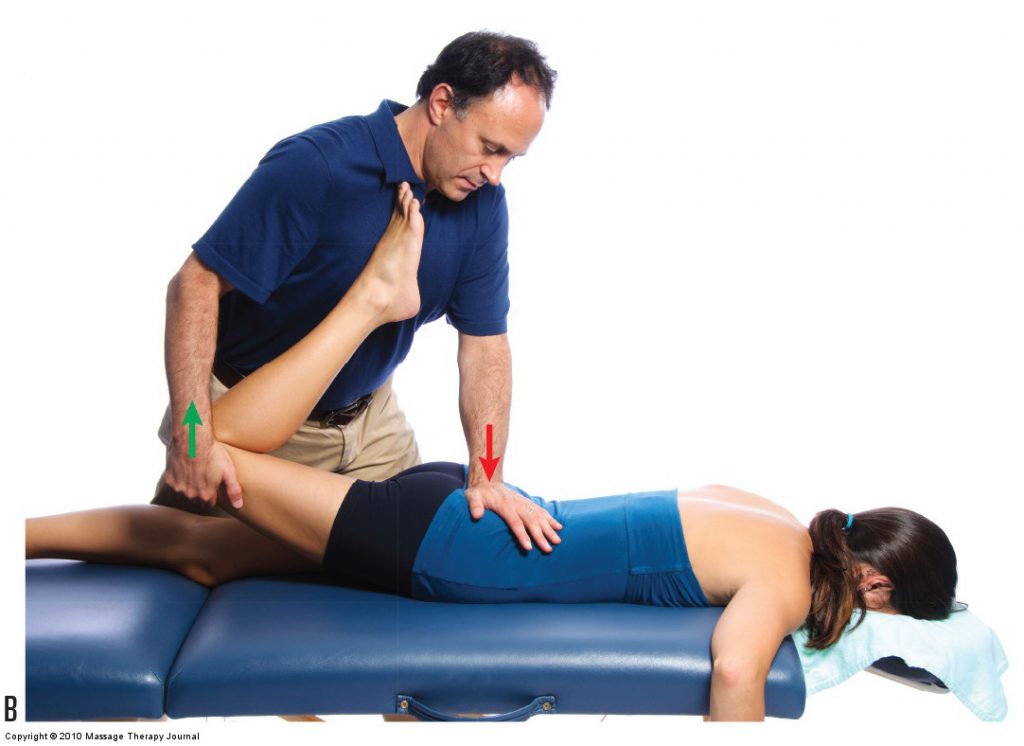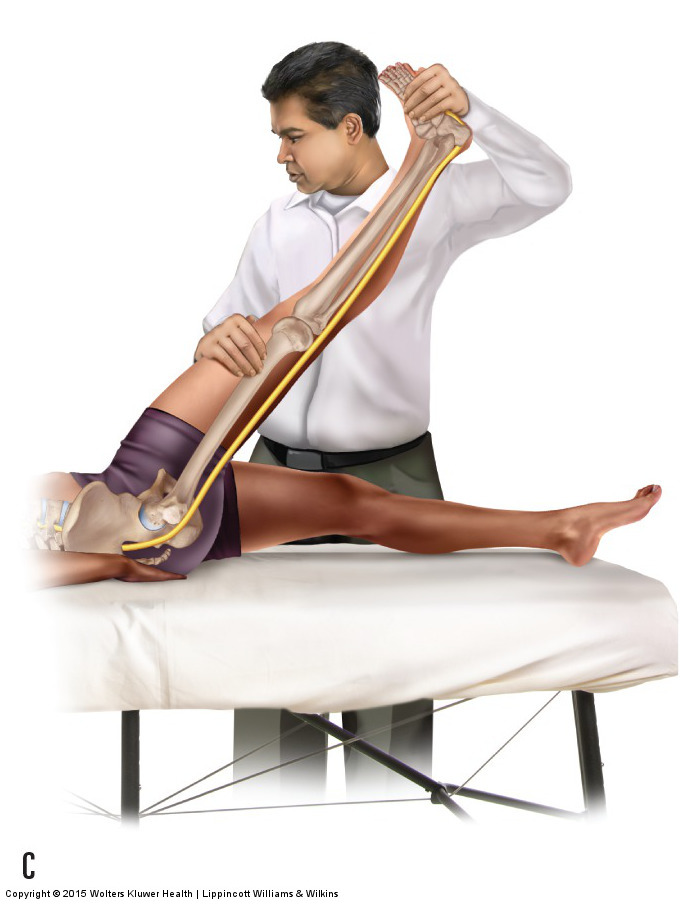This blog post article is part of a series of articles on assessment of the low back and pelvis. Scroll to the end of this article to see the others in this series.
Special Orthopedic Assessment Tests

Yeoman’s special orthopedic assessment test for the sacroiliac joint. Permission Joseph E. Muscolino.
Although most sprains, strains, and spasms can be assessed accurately with the procedures already introduced in other blog post articles in this series, several conditions of the lumbar spine and pelvis require knowledge of specific procedures known as special orthopedic assessment tests. Each special assessment test yields valuable information about the possible existence of a specific condition or type of condition. The most frequently used special orthopedic assessment tests for the low back and pelvis are listed here:
“Stress and Assess”
Orthopedic assessment testing works by what could be called “stress and assess”. The orthopedic test procedure adds a physical stress to the client’s body. If the structure to which the stress is added is healthy, the client will feel no pain. But if that structure were unhealthy, then the client would likely feel pain (or some other symptom / paresthesia) and the test procedure would be positive and we would know that structure is unhealthy. The best orthopedic assessment tests are the ones that are the most specific so the correlation of the positive finding of pain (or other paresthesia) can most easily be made to one structure of the body. Keep in mind that by its nature, orthopedic assessment testing adds physical stress to the client’s body. This must be kept in mind when deciding on the advisability of performing our test procedures.

Passive Straight Leg Raise. Permission Joseph E. Muscolino. Manual Therapy for the Low Back and Pelvis – A Clinical Orthopedic Approach (2015)
Note: Special Orthopedic Assessment Tests
- Space-occupying lesion tests
- Straight leg raise (SLR)
- Cough test
- Valsalva maneuver
- Slump test
- Piriformis stretch test
- Test for injured tissue
- Passive SLR
- Active SLR
- MR
- Nachlas’ test
- Yeoman’s test
- SIJ medley
Common uses of the these special orthopedic assessment tests include the following:
- SLR tests, cough test, Valsalva maneuver, slump test, and piriformis stretch test are used to assess a space-occupying lesion of the lumbar spine and buttocks. The lesions these tests are most often used to assess are pathologic (bulging or herniated) lumbar discs and lumbar spine bone spurs from DJD (osteoarthritis), but these four tests may also be used to assess swelling or a tumor in the lumbar spine, or piriformis syndrome in the buttock.
- Piriformis stretch test is used to assess a tight piriformis that might be compressing the sciatic nerve in the buttock.
- Active and passive SLR tests can also be used to assess for sacroiliac and lumbar strains and sprains as well as sacroiliitis.
- Nachlas’, Yeoman’s, and SIJ medley tests are used to assess injury to the SIJ.
This blog post article is the 8th in a series of 18 blog posts on the subject of assessment of the low back and pelvis.
The blog post articles in this series are:
- Introduction to Assessment of the Low Back and Pelvis
- Health History
- Introduction to Physical Assessment Examination of the Low Back and Pelvis
- Postural Assessment of the Low Back and Pelvis
- Range of Motion and Manual Resistance Assessment of the Low Back and Pelvis
- Muscle and Bone Palpation of the Low Back and Pelvis
- Joint Motion Palpation Assessment
- Overview of Special Orthopedic Assessment Tests of the Low Back and Pelvis
- Straight Leg Raise Tests for Space-Occupying Lesions
- Cough Test and Valsalva Maneuver
- Slump Test
- Piriformis Stretch Test
- Straight Leg Raise and Manual Resistance Tests for Strains and Sprains
- Nachlas and Yeoman’s Tests
- Sacroiliac Joint Medley of Tests
- Treatment Strategy for the Low Back and Pelvis
- Self-Care Advice for the Client with a Low Back / Sacro-Iliac Joint Condition
- Brief Review of Assessment and Treatment of Conditions of the Low Back and Pelvis


